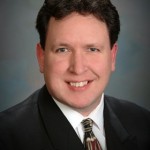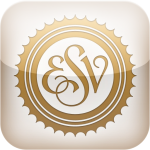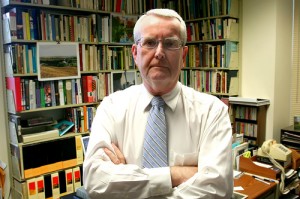 In my teaching and preaching ministry, I primarily use the English Standard Version (ESV) and it is the Bible most frequently used in our services at King’s Church here in Phoenix.
In my teaching and preaching ministry, I primarily use the English Standard Version (ESV) and it is the Bible most frequently used in our services at King’s Church here in Phoenix.
I say this for two main reasons; the first being that it can be very confusing if we have the different words in front of us as the sermon is being preached. This can be very alarming for new Christians who are not aware of the issues and see a text in front of them that is so different from what the preacher is using.
Decades ago, there was only one real Bible version of choice, the King James Version. Though it was the Geneva Bible with its Reformation based explanatory study notes that first came over to the shores of America on the Mayflower, the growing popularity of the KJV eventually made seeing the Geneva Bible a rare event in church services and in the homes of Christians in the USA.
The King James Version is certainly an excellent translation which has served the church for many generations. However, the meaning of words have changed a great deal in the centuries since the first printing of the KJV in 1611. Many preachers (me included) found that when using it, much time was required in a sermon to update and explain the archaic language used. A newer translation removes the need for this.
In addition to the archaic language of the KJV, what we know of the original text and languages has improved significantly in the last 400 years or so. The Church in our day has needed a Bible translation which reflects this great advancement in scholarship.
In some church services, there can be as many as 15-20 different versions in use in the congregation. Of course, people can use any translation they like. They are free to do so! Yet I think it is very helpful for pastors and elders to recommend one main translation for the congregation as this eliminates any potential confusion.
With this as a foundation, the next question we need to ask is “which is the best Bible to use?”
This leads me to talk about the second reason for choosing the ESV. It stems from the desire to have an essentially literal translation (a “word for word” translation) in use rather than a dynamic equivalent, or “thought for thought” one. As the article below states, the primary advantage in choosing a “word for word” translation is that “preachers, teachers, and church people will have the confidence that their Bible gives them the equivalent English words for what the authors of the Bible actually wrote. They do not need to wonder at every point where translation ends and commentary begins. They do not need to worry that important material has been omitted from the original.”
Certainly, there are other good ESL translations out there. For years I have used the NASB (New American Standard Bible) which is tremendously accurate as a translation. However, if reason number one above was ever to be achieved, a choice needed to be made. The ESV is known for both its very accurate translation and for its language flow. It is very easy to read and to memorize. It is great for both adults and children.
 I write these words here and present this short article with questions and answers below (by Leland Ryken) because I wanted you to know some of the thinking behind the ESV being our Bible of choice here at King’s Church.
I write these words here and present this short article with questions and answers below (by Leland Ryken) because I wanted you to know some of the thinking behind the ESV being our Bible of choice here at King’s Church.
While we are still on the subject of Bibles, I am often asked to recommend a good Study Bible. I always point people to either the Reformation Study Bible or the ESV Study Bible, both of which use this same English Standard Version (ESV) text. These are the two exceptional Study Bibles out there. I love using both of them and am confident that in directing people to these notes, they will not be led astray. I certainly cannot say that about all Study Bibles out there but these two are remarkable gifts to the Body of Christ at large. You will usually see me preaching using one of these Study Bibles.
– Pastor John Samson
On Bible Translation: A Q & A with Leland Ryken
From the KJV to the NIV, NLT, ESV, and beyond, English Bible translations have never been as plentiful as they are today. This proliferation has also brought some confusion regarding translation differences and reliability. Leland Ryken agreed to join us for a two-part Q&A on Bible Translation. In his new book, Understanding English Bible Translation, he clarifies some of the issues of modern Bible translation and makes a case for an essentially literal approach. Join us as he answers a handful of timely questions:
When did you first become interested in issues of translation philosophy?
 My interest has been marked by two key moments along the way. The first came at the time of the release of the NIV, when I was asked to write a literary review of the new translation for Christianity Today. That assignment just happened to coincide with the appearance of a book of essays that criticized modern translations (chiefly the RSV and New English Bible) as being inferior to the KJV. Although I was only vaguely aware of how translation philosophy entered that debate, I became semi-expert in the deficiencies of modern translations.
My interest has been marked by two key moments along the way. The first came at the time of the release of the NIV, when I was asked to write a literary review of the new translation for Christianity Today. That assignment just happened to coincide with the appearance of a book of essays that criticized modern translations (chiefly the RSV and New English Bible) as being inferior to the KJV. Although I was only vaguely aware of how translation philosophy entered that debate, I became semi-expert in the deficiencies of modern translations.
After serving as a member of the translation committee that produced the ESV, I asked Lane Dennis if he wanted me to expand my review of the NIV into a book-length exploration of the issues surrounding the rival translation philosophies. Lane surprised me by saying yes, so that was followed by my immersion in the subject of the opposed philosophies known as dynamic equivalence and essentially literal translation. The learning curve was steep, but very rewarding.
Continue reading →
 One man said he had two horses living inside him; one a beautiful white horse called holiness; the other a dark foreboding horse called covetousness.
One man said he had two horses living inside him; one a beautiful white horse called holiness; the other a dark foreboding horse called covetousness.
 In my teaching and preaching ministry, I primarily use the English Standard Version (ESV) and it is the Bible most frequently used in our services at King’s Church here in Phoenix.
In my teaching and preaching ministry, I primarily use the English Standard Version (ESV) and it is the Bible most frequently used in our services at King’s Church here in Phoenix. I write these words here and present this short article with questions and answers below (by Leland Ryken) because I wanted you to know some of the thinking behind the ESV being our Bible of choice here at King’s Church.
I write these words here and present this short article with questions and answers below (by Leland Ryken) because I wanted you to know some of the thinking behind the ESV being our Bible of choice here at King’s Church. My interest has been marked by two key moments along the way. The first came at the time of the release of the NIV, when I was asked to write a literary review of the new translation for Christianity Today. That assignment just happened to coincide with the appearance of a book of essays that criticized modern translations (chiefly the RSV and New English Bible) as being inferior to the KJV. Although I was only vaguely aware of how translation philosophy entered that debate, I became semi-expert in the deficiencies of modern translations.
My interest has been marked by two key moments along the way. The first came at the time of the release of the NIV, when I was asked to write a literary review of the new translation for Christianity Today. That assignment just happened to coincide with the appearance of a book of essays that criticized modern translations (chiefly the RSV and New English Bible) as being inferior to the KJV. Although I was only vaguely aware of how translation philosophy entered that debate, I became semi-expert in the deficiencies of modern translations.